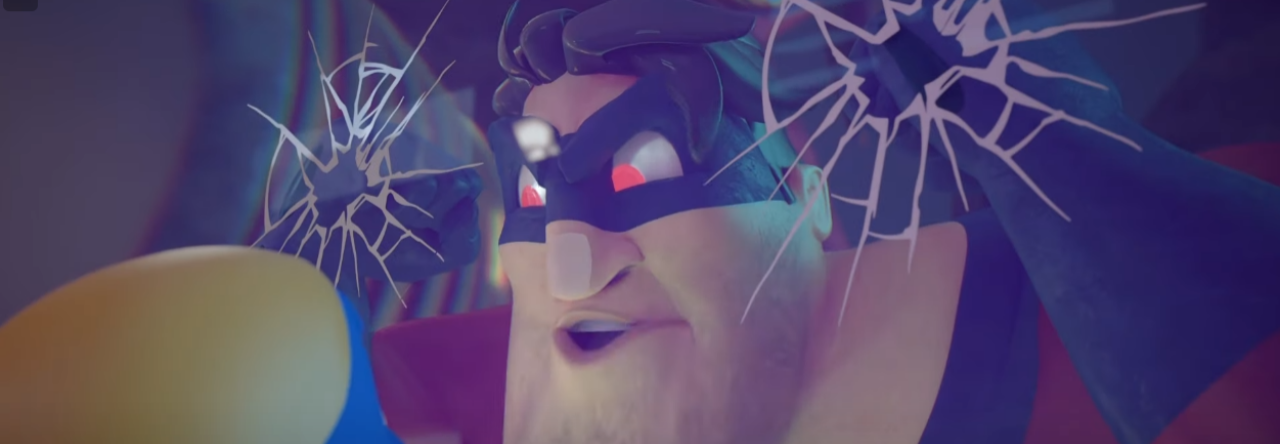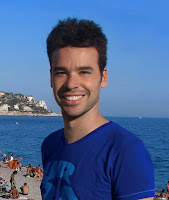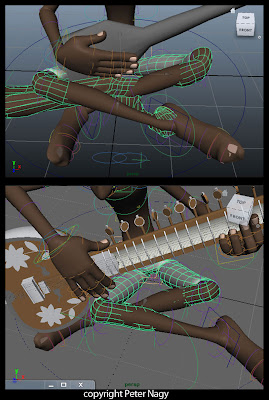AnimSchool would like to introduce Angel Antelo. Before AnimSchool, did you have any other experience with animation?
I actually had no experience in animation.I just had a slight prior idea of how Maya software worked due to some online tutorials I could find at that time. Also some books like the well known “Survival Kit” began to guide me through this world and not much more. So everything has been new for me.
Why do you want to become an animator?
I guess it’s the simple dream of a child. It’s something that captured my attention since I was just a little boy. I remember watching some Disney movies back in the day: Aladdin, The Little Mermaid, The Lion King… I remember how much I enjoyed them and how they sparked my interest in drawing. They created a hobby and a passion that I still carry with me today.
One of the things I remember was when they showed the “making of” from one of these movies on TV; I loved to watch how they made those drawings, animations, visual effects… I recorded it on a video tape and watched it over and over again. I liked to watch how they carried out all that work, which tools were used. I would just watch all that super-complex stuff on the screen of their computers which I couldn’t understand. I was fascinated. It was something that I was delighted to see, and loved. To get a glimpse of that creative environment, the people whose jobs were to create different worlds that we could enjoy later. I just remember watching all that and thinking to myself: One day I want to be part of that.
What inspires you to work hard towards your career goals?
It’s related with the previous answer. It is doing everything in your power to reach that goal. That dream.
It’s not easy. The knowledge you need isn’t going to reach your brain by a magical lightning that hits your head. You have to spend a lot of time, long hours in front of the computer and sometimes manage to find the time to do that thing they call sleeping at night (it’s ok until you start seeing pink punk cows in your room. Then you know you need to stop). You really have to like it to avoid getting tired of it and to stay motivated. My start was a little “late” in this field if I compare myself to others that started much younger, but it came to a point in my life that it was like “now or never”. I had the chance and I made the decision, I brushed my hair, I joined AnimSchool and I decided to spend my time and energy on it. I think it’s one of the best decisions in my life ever. It almost seemed unreachable and impossible for me to start studying and getting prepared for what I always liked. So if I could, anyone can…
The goals are still far away. Someday being able to do something that could captivate, excite, thrill or just make someone laugh. Create something that people can enjoy. I still have a lot to learn to get even close to that point.
What is your favorite animated film from your childhood, and what is your favorite film now that you’re an adult? What do you think makes these films special?
The Lion King, Aladdin.. all these great classics that will last forever, are kept in a special corner in my heart for being those which lit up that little spark in my head. Then came films like Toy Story that left us all with our mouths wide open and a new world of possibilities opened up right in front of our eyes. Ratatouille seems perfect to me. script, animation, characters… Rio was a nice surprise, I also have to say that thanks to AnimSchool I’ve had the pleasure to meeting some of the people who had actually worked on it. It makes me appreciate it more, if that was even possible….
What do you enjoy about animation the most?
Maybe it’s a bit hard to answer or explain. It’s like “creating life” from scratch. At first you find that character, on your screen,and it seems like a toy with nothing inside, staring lifelessly into the distance, as if he had just seen Death wearing high heels and eating tacos. It’s like when you’re drawing, it’s a blank canvas. You have countless possibilities where the limit is a road sign with “no limit” graven with fire on it; it’s where the imagination (and your current knowledge, of course) takes you.
It surprises me every day with new things I find out and
learn. Even right now, answering these questions amazes me; about 18 months ago I learned that the little red stick is a “keyframe” for example… I’ve barely begun this journey. If I’m sure of one thing, then it’s that I cannot express how happy I am with this experience.
How has your experience been at AnimSchool? What is your favorite thing you’ve learned?
AnimSchool is great!!! I cannot say otherwise. I have nothing but good things to say. Almost always at the beginning of each new assignment I get that little fear and I start doubting myself and whether I can do it or not. But since teachers get involved in your work, your progress, motivate you and really care about your shots, I find all the fear and doubt disappearing. These professionals show you their workflows, critique your assignments to make sure you get a better result, they share with us the little tricks they’ve learned over the years. I’m really grateful for everything they taught us…
But probably one of the best things, beside the great teachers, beside the assignments, beside the awesome rigs provided, is all the amazing people you meet from all over the world. People who like and love the same as you do. It has created a little atmosphere that makes you feel at home and supported in this great adventure. They become your friends… and that’s priceless.








